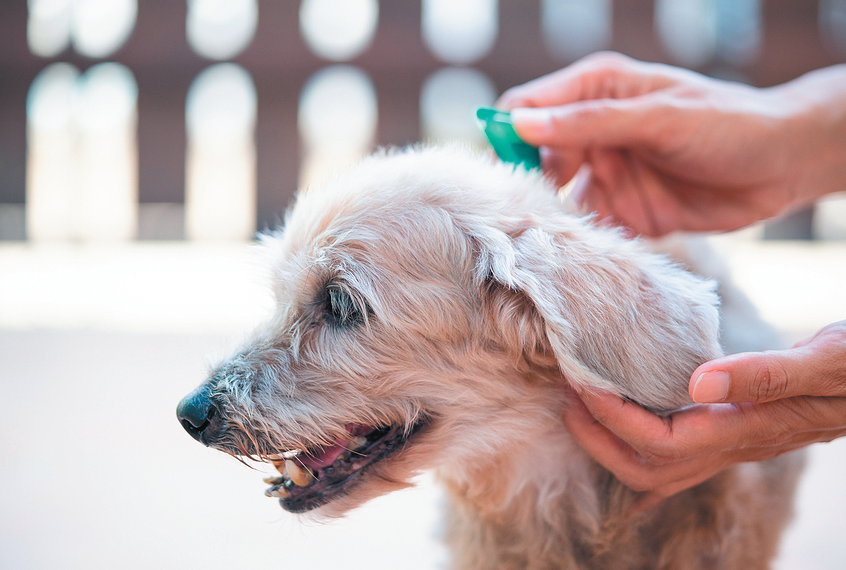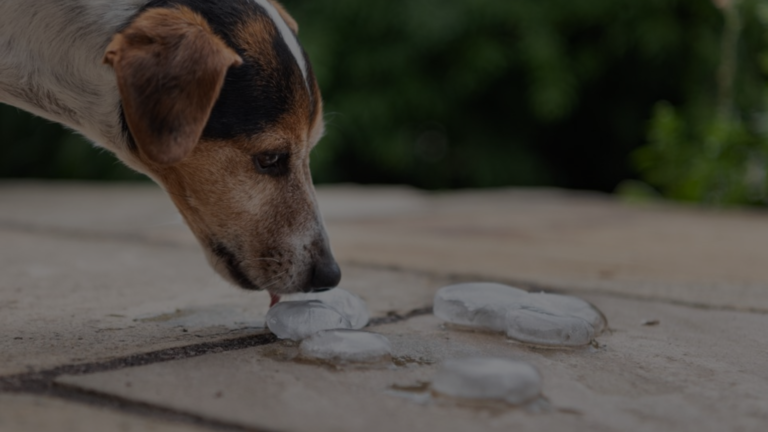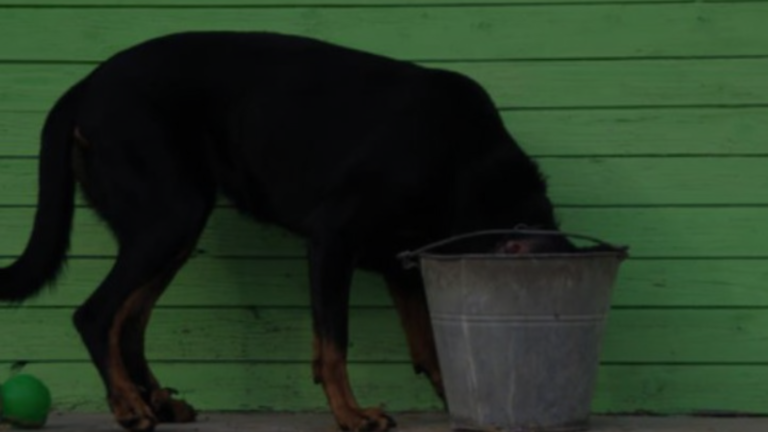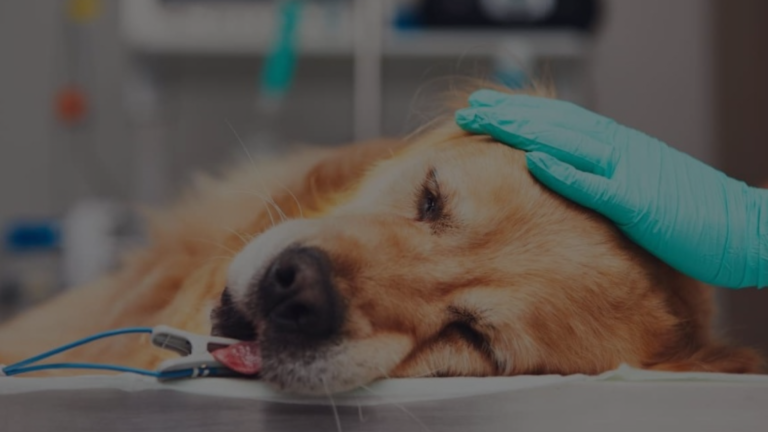Seeing your beloved dog losing fur or obsessively chewing their tail can be alarming. While the sight might send shivers down your spine, understanding the potential causes can ease your worries and guide you toward the right solutions. So, why is my dog pulling hair out of her tail?
Why is My Dog Pulling Hair Out of Her Tail?
Several factors can trigger tail-chasing and hair loss in dogs. Here’s a closer look at the most common culprits:
Skin Irritations
- Fleas and Ticks: These pesky parasites love making your dog’s tail their home, causing intense itching and leading to excessive chewing and hair loss. Regular flea and tick prevention is crucial.
- Allergies: Environmental allergens like pollen, dust mites, or food sensitivities can trigger itchy skin, particularly around the tail area. Consult your veterinarian for allergy testing and management strategies.
- Hot Spots: These inflamed, moist patches develop due to excessive licking or chewing and can quickly worsen if left untreated. Prompt veterinary attention is essential.
- Dry Skin: Lack of moisture can make your dog’s skin itchy and prone to irritation, leading to tail-chasing behavior. Consider using a humidifier or a veterinarian-recommended moisturizing shampoo.

Pain and Discomfort
- Painful Tail: Injuries, arthritis, or pinched nerves in the tail can cause pain, prompting your dog to chew or bite the area for relief. Seek veterinary care for diagnosis and treatment.
- Anal Gland Issues: Impacted or infected anal glands can cause discomfort and scooting, sometimes leading to tail-chasing. Your veterinarian can express the glands if necessary.
Behavioral Causes
- Boredom and Anxiety: Under-stimulated or anxious dogs may resort to tail-chasing as a coping mechanism. Provide ample mental and physical stimulation through walks, playtime, and interactive toys.
- Compulsive Disorder: In rare cases, tail-chasing can be a sign of a compulsive disorder. Consult a veterinary behaviorist to explore treatment options.

Diagnosing the Root Cause
To address the tail-chasing effectively, it’s crucial to identify the underlying cause. Schedule a visit with your veterinarian for a thorough physical examination, including:
- Skin and fur assessment
- Palpation of the tail and surrounding areas
- Checking for fleas, ticks, or other parasites
- Possible allergy testing
- X-rays or other imaging tests (if needed)
Tailoring Treatment to Your Dog
Once the cause is identified, your veterinarian can recommend the most appropriate treatment plan, which may include:
- Medications: To address allergies, infections, or pain.
- Dietary changes: If food allergies are suspected.
- Flea and tick prevention: For parasite control.
- Environmental management: Minimizing exposure to allergens.
- Behavior modification: To address boredom or anxiety.
- Surgery: In rare cases, for severe injuries or anal gland issues.

Preventing Future Tail Troubles
By understanding the potential causes and taking preventive measures, you can help your dog avoid tail-chasing woes:
- Regular veterinary checkups: Early detection and treatment of underlying issues can make a big difference.
- Parasite prevention: Use year-round flea and tick preventative medication.
- Balanced diet: Feed your dog a high-quality diet appropriate for their age and breed.
- Plenty of exercise and mental stimulation: Keep your dog physically and mentally engaged to prevent boredom and anxiety.
- Monitor their behavior: Pay attention to any signs of itching, chewing, or discomfort around the tail area.
Remember: While tail-chasing and hair loss may seem unsettling, there are often treatable causes. By identifying the underlying issue and working with your veterinarian, you can help your furry friend wag their tail happily once again.

Additional Resources
- American Kennel Club: https://www.akc.org/expert-advice/vets-corner/dog-allergies/
- Veterinary Partner: https://vetsource.com/
- Association for Pet Loss and Bereavement: https://www.aplb.org/
Disclaimer: This article is for informational purposes only and does not constitute professional veterinary advice. Always consult with your veterinarian for diagnosis and treatment of your dog’s tail.
FAQs About Your Dog Pulling Hair Out of Their Tail
Why is my dog suddenly pulling hair out of their tail?
There are many potential reasons, including skin irritations like fleas, allergies, or hot spots; pain or discomfort from injuries, arthritis, or anal gland issues; or even behavioral causes like boredom, anxiety, or a compulsive disorder. It’s important to see your veterinarian to determine the underlying cause for proper treatment.
What are some signs to watch for that might indicate a problem?
Beyond hair loss, look for excessive chewing, licking, or biting of the tail; red, inflamed skin; scabs or sores; scooting or dragging the rear end; or changes in behavior like lethargy or decreased appetite.
Can I treat my dog’s tail problem at home?
It’s highly discouraged to treat the problem at home without veterinary guidance. While home remedies might seem tempting, they could worsen the underlying issue or mask more serious problems. Seeking professional diagnosis and treatment is crucial for your dog’s well-being.
What tests might my veterinarian perform?
Depending on the suspected cause, your veterinarian may conduct a physical examination, skin and fur assessment, parasite check, allergy testing, X-rays, or other imaging tests.
What treatment options are available?
Treatment will depend on the diagnosed cause. It could involve medications for allergies, infections, or pain; dietary changes for food sensitivities; flea and tick prevention; environmental management for allergens; behavior modification techniques; or, in rare cases, surgery.
How can I prevent my dog from pulling hair out of their tail in the future?
Regular veterinary checkups, parasite prevention, a balanced diet, ample exercise and mental stimulation, and monitoring your dog’s behavior for any signs of discomfort are key to preventing future tail troubles.







